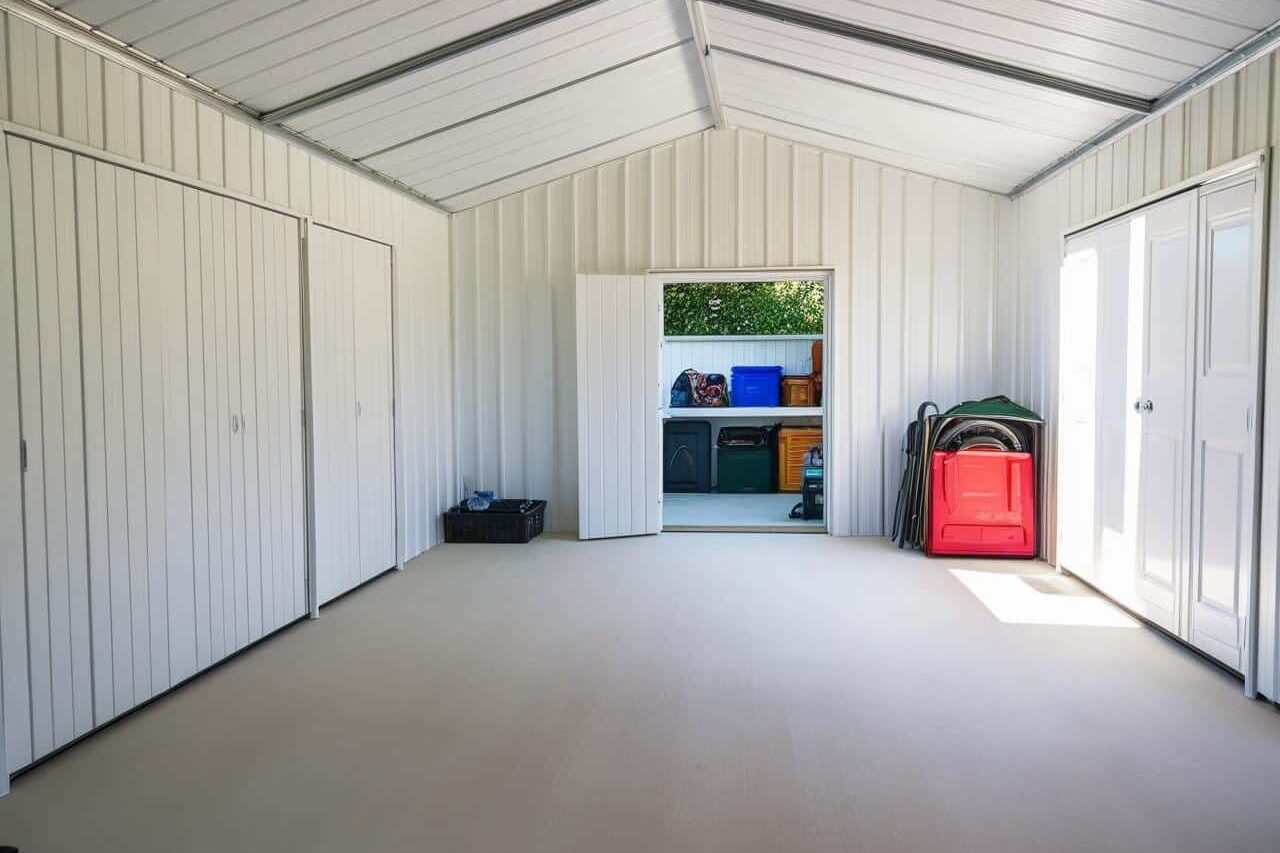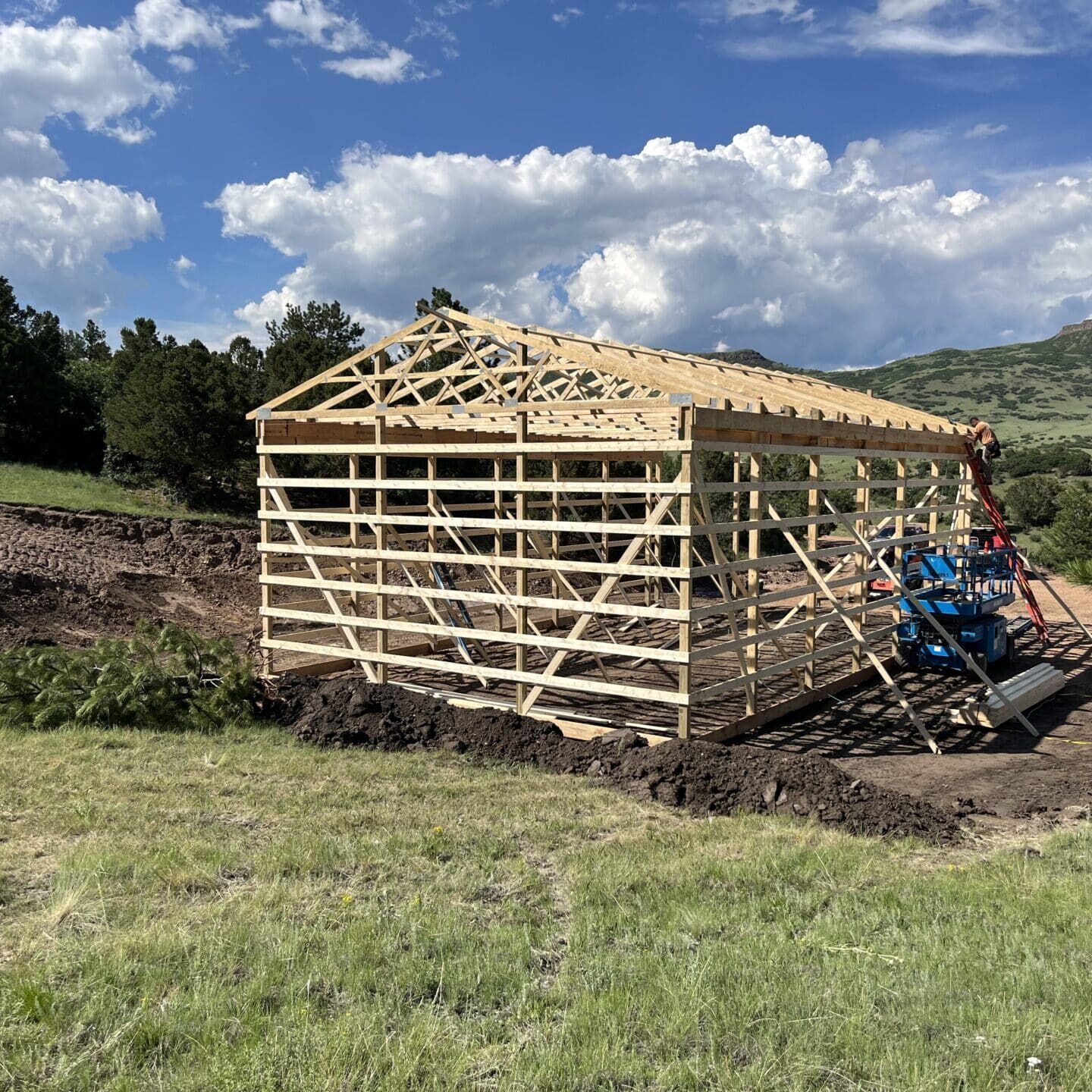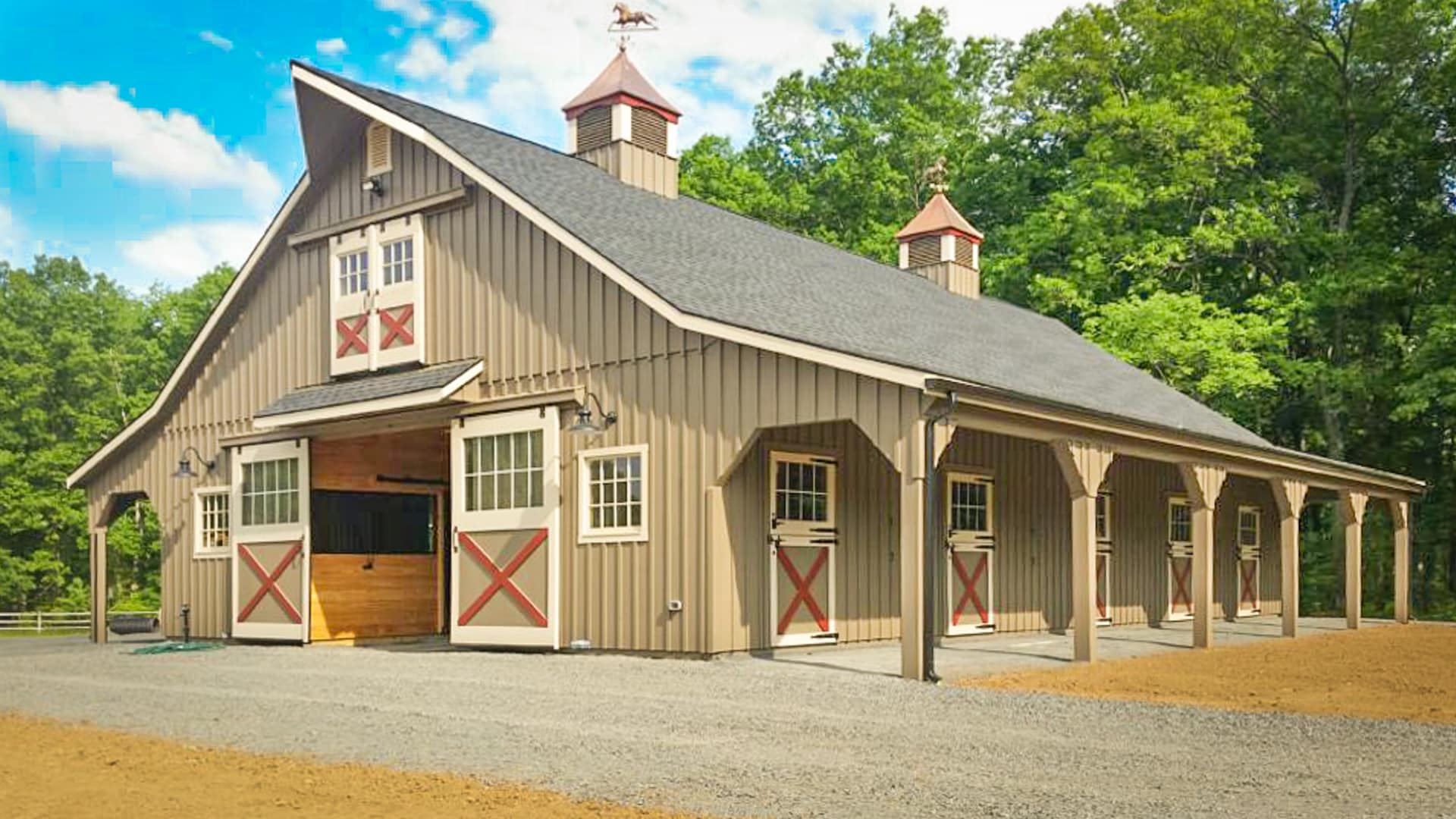Let’s Create Your Perfect building
Request a quote or begin designing your own building!

A pole barn is more than just a building, it’s where you store equipment, protect animals, or run your business. To keep it strong and dependable, regular pole barn maintenance is a must. Without it, even the best-built barns can face issues like leaks, rust, or rot over time.
The good news is, maintaining your barn doesn’t have to be complicated. With a simple upkeep routine and a little attention to detail, you can keep your structure sturdy, attractive, and functional for decades. This guide covers practical pole barn maintenance tips to help Virginia property owners protect their investment and keep their buildings in top condition.
Looking to build new instead? Explore our Pole Barns for Sale in Virginia to see all the options.
Think of pole barn maintenance as a regular check-up for your building. Catching small issues early prevents them from turning into costly repairs later. A minor roof leak might seem harmless now, but if left unaddressed, it can lead to serious water damage and expensive structural repairs down the road.
Proper pole barn upkeep goes beyond appearances, it’s about longevity, safety, and savings. A well-maintained barn lasts longer, requires fewer repairs, and keeps your property protected year-round. For farmers, homeowners, and business owners, consistent maintenance also means being ready for Virginia’s seasonal challenges, whether that’s humidity, heavy rain, or winter snow.
In short, routine pole barn maintenance is one of the smartest investments you can make. It helps you avoid unexpected issues, safeguard your building’s structure, and ensure your barn remains reliable for years to come.

When it comes to how to maintain a pole barn, routine inspections are your first line of defense. Catching small issues early keeps them from becoming expensive pole barn repairs later. We recommend inspecting your barn at least twice a year, and after major storms.
Here’s what to keep an eye on:
A few minutes with a checklist can save you thousands in pole barn repair later. Want to learn how pole barns are designed to last? Read our full guide on Pole Barn Framing.

Clean barns last longer. Whether you own a metal pole barn or a wood pole barn, dirt, debris, and clutter can cause long-term issues. For example, trapped moisture can speed up rust on metal siding, while wood left dirty is more likely to attract pests. Regular pole barn cleaning makes maintenance easier and prevents issues from going unnoticed.
A clean barn lasts longer, plain and simple. Whether you own a metal pole barn or a wood pole barn, keeping it free of dirt, debris, and clutter is essential for long-term durability. Trapped moisture can accelerate rust and corrosion on metal siding, while untreated grime on wood surfaces can attract insects and pests.
Regular pole barn cleaning not only keeps your space looking its best but also makes maintenance easier. By keeping surfaces clear and visible, you’ll spot small issues, like leaks, cracks, or mold, before they become costly problems. A few hours of cleaning now can save you years of repairs later.
Follow these pole barn cleaning tips:

The long-term stability of your barn depends on consistent structural pole barn maintenance. Even the strongest post-frame barns can shift, loosen, or wear down over time if they’re not cared for properly. Seasonal changes put stress on the posts, hardware, and finishes that hold everything together. Staying on top of these tasks not only keeps your barn looking sharp but also prevents costly pole barn repairs in the future. Think of it as protecting the very backbone of your building.
Planning on expanding your barn into a workshop? Explore our Pole Barn Garages & Workshops for custom builds.

Your roof is your barn’s first line of defense against the outdoor elements, which is why pole barn roof maintenance deserves its own section. A neglected roof can quickly lead to leaks, mold, and structural damage. Regular care keeps your barn dry, safe, and energy-efficient.
Key steps include:
If you’re housing animals, good roofing is essential. Learn more about safe, durable designs on our Horse Barns in Virginia.

Pole building maintenance means planning for a wide variety of climates, as weather conditions can be tough on barns. Preparing your structure for each season keeps it performing year after year.
A little preparation goes a long way in preventing emergency pole barn repairs.
If you’re using your barn as a workshop or garage, proper upkeep is especially important to protect vehicles, tools, or equipment. Not sure whether a pole barn garage or a carport fits your needs best? Check out our guide on Pole Barn Garage vs Carport Garage for a full breakdown.

One of the most overlooked aspects of pole barn upkeep is pest control. Birds, rodents, termites, and insects can cause significant damage if ignored. A proactive approach will protect both wood pole barns and metal barns.
If animals are part of your operation, see how our Livestock & Horse Barns keep animals safe and pests out.

Another niche but important part of pole barn maintenance is managing moisture. Condensation can rot wood, rust metal, and create mold problems if left unchecked.
This kind of care keeps your barn comfortable and structurally sound for the long term.
Are you considering combining living space with a barn? Check out our Barndominiums in Virginia, where proper ventilation makes all the difference.

Here’s the truth: the best barns need less maintenance. Our barns come with 29-gauge metal roofing and siding backed by a 40-year paint warranty, which dramatically cuts down on the need for frequent pole barn upkeep.
That said, every barn benefits from professional check-ups every few years. A quick inspection can confirm that your posts are solid, your fasteners are secure, and your finishes are holding strong. Consider it an investment in your barn’s future.
For commercial uses, our Commercial Pole Barns are designed for durability and low maintenance right from the start.
Need something quick to reference? Here’s a quick-reference checklist to keep your barn in peak condition:

The right maintenance keeps your barn standing strong, but the right builder makes upkeep easier from day one. At Premier Building Solutions, we design pole barns in Virginia that are durable, customizable, and built with materials that minimize long-term care.
Whether you’re planning an Agricultural Pole Barn, a Workshop or Garage, or a full Barndominium, we’ll make sure your barn is built to handle Virginia’s weather and your specific needs.
Ready to get started? Explore our Pole Barns for Sale in Virginia and let’s build a barn you’ll be proud to maintain for years to come.
Most experts recommend a pole barn upkeep routine at least twice a year, once in the spring and again before winter. You should also do a quick inspection after major storms to catch issues like roof damage or loose panels early.
For metal barn upkeep, simply rinse siding and roofing with a garden hose or pressure washer on a low setting. Avoid harsh chemicals that could damage finishes. Clearing gutters and downspouts regularly is also part of smart pole barn cleaning tips.
Yes. Wood pole barn maintenance often involves checking for rot, pests, and reapplying protective finishes every few years. Metal barns usually require less upkeep but should be inspected for rust and scratches that expose bare metal.
Pole barn roof maintenance includes inspecting for leaks, loose screws, and cracked sealants. In Virginia winters, you may also need to clear excess snow to avoid stress on the roof. Ridge vents and skylights should be checked to make sure they’re watertight.
Absolutely. Consistent pole barn maintenance is the best way to prevent costly repairs. By tightening fasteners, touching up paint, and controlling pests, you’re extending the life of your barn and protecting your investment.
Heavy snow and ice can put a lot of stress on your barn’s roof. Use a roof rake to carefully remove excess buildup, and make sure gutters are clear so meltwater can drain away. Installing snow guards or reinforcing trusses are smart upgrades if your barn is in a part of the country with heavier winters.